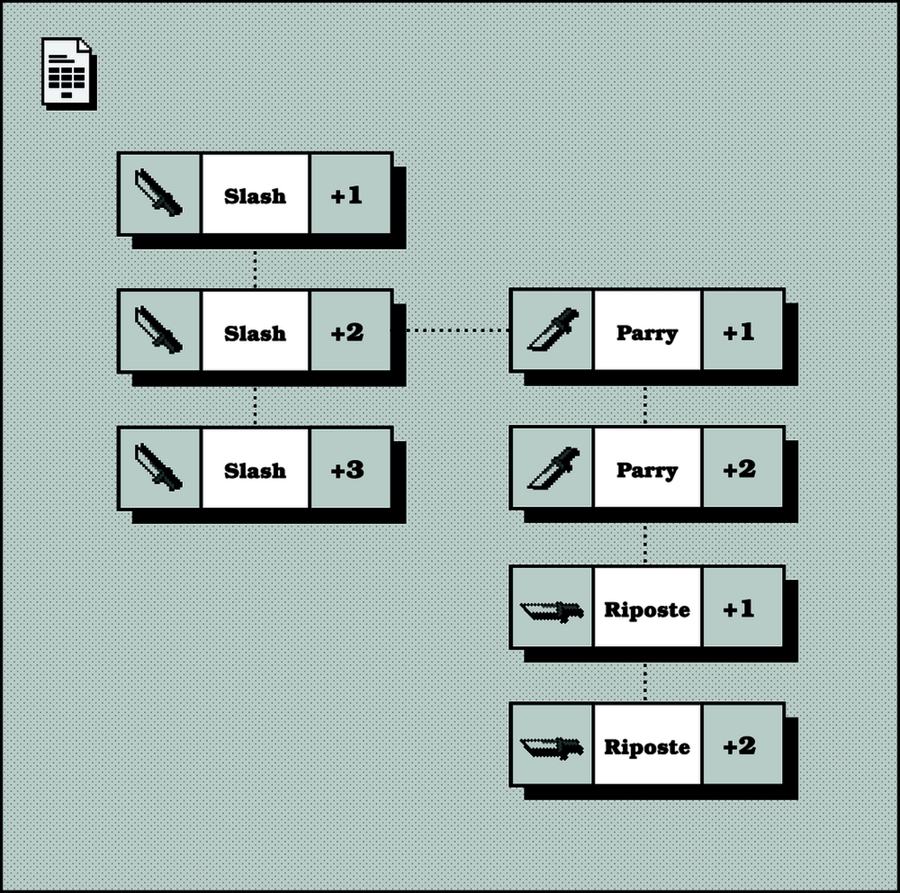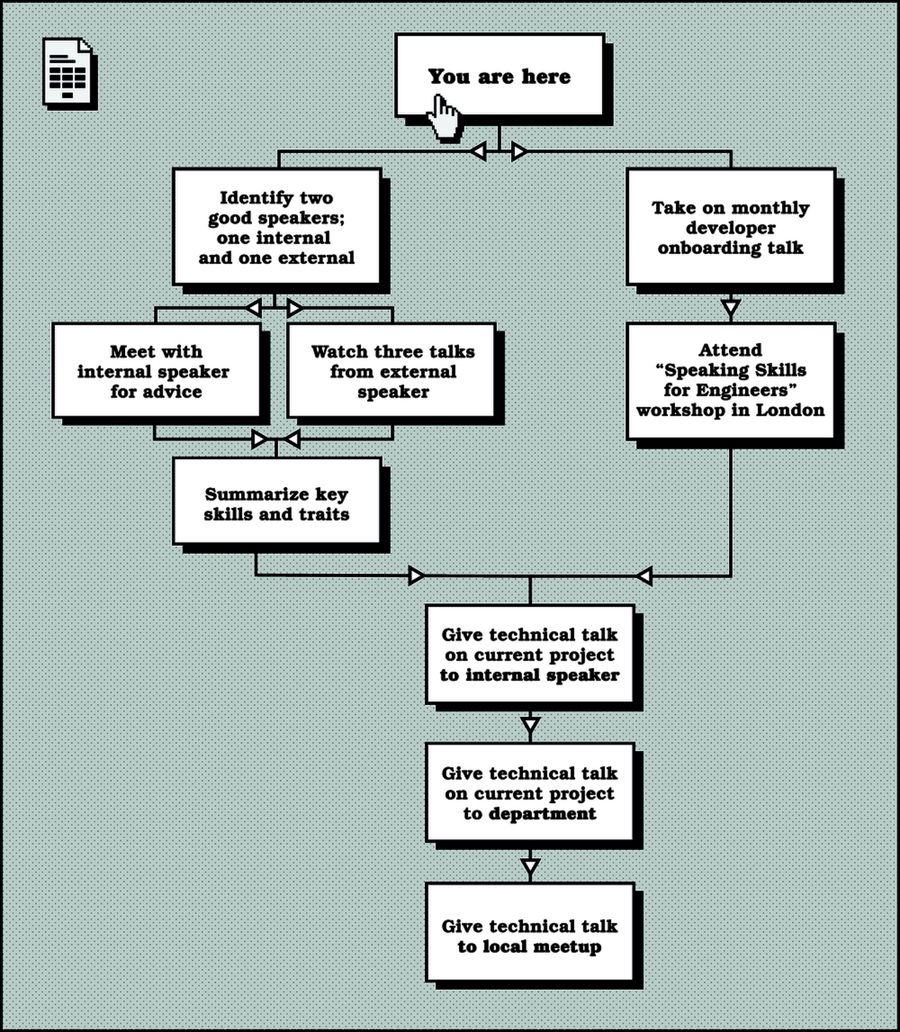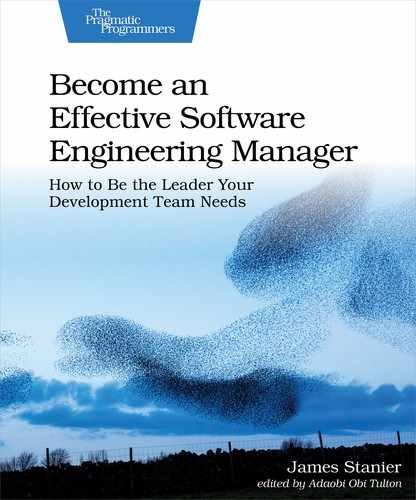The Zone of Proximal Development
So, we’ve had a look at the needs of humans, both inside and outside of work. You can make a lasting difference by helping your staff achieve their higher-level needs. They’ll remember that time you were their manager. At the top of Maslow’s pyramid is self-actualization: your staff want to define and achieve goals, advance their careers, improve their skills, and become renowned experts in their chosen field. But rather than helping your staff set goals and then leaving it up to chance for them to get there, is it possible to define an incremental path for them to follow? Is there a framework that can guide them on their journey?
We’re going to dip into learning theory to see whether we can find out more. Notably, we’re going to look at a concept called the zone of proximal development, which was a theory originally proposed by Lev Vygotsky in the 1930s. This concept was introduced to understand better how children could be best supported by teachers during their education. During that time, there were contradictory theories and practices on teaching. Schools would predominantly use traditional teacher-led instruction followed by frequent assessments, whereas a fellow psychologist Jean Piaget believed that children learned best when development was self-directed.
Vygotsky saw that whereas this curiosity-led development works well for some subjects—for example, children learn verbal language with little teaching—for most other subjects, the presence of a more knowledgeable individual was needed to best advance the child’s learning. This was particularly true of mathematics and writing.
The zone of proximal development defines the area in which a person cannot progress without the presence of another person with a higher skill set to assist them. However, once the person has understood and completed the task, they are able to take on tasks of even higher difficulty, pushing their zone of proximal development toward harder and harder tasks. The best teachers and schools, therefore, are able to keep children in their zones of proximal development. The diagram illustrates the concept.

In retrospect, this theory almost seems like common sense. However, it highlights two things that are important in order to ensure that learners are continually improving their skills:
-
That they are being given the tasks that sit within their zone of proximal development.
-
That there are suitable individuals with more knowledge to help them complete those tasks with assistance.
Does this sound at all familiar? This doesn’t just apply to teachers and children. It applies to all of us wanting to improve our skills at work. But the workplace isn’t a classroom. We’re not following a curriculum together. Instead, people are working on all manner of tasks at varying difficulties.
As a manager, you can apply the theory of the zone of proximal development at both task and career levels. For the task level, we can consider it for work within teams, fueling individual growth and encouraging mentorship. At the career level, we can use it as a career-planning methodology for our staff. Let’s look at both.
Task-Level Proximal Development
Every task could just be something that needs to get done. Or, alternatively, each task could be viewed as a chance for one of your staff to advance their zone of proximal development. Which is it going to be?
You should give tasks to staff that are in their zone of proximal development. The good news is that you’ve already read about the tools you need to make this happen. If you squint at the previous diagram, it looks a bit like the delegation diagram that we covered in Chapter 3, Interfacing with Humans. Delegation can ensure that you give the responsibility for a task to one of your staff while you maintain accountability for it getting done to a high standard and in an acceptably timely manner.
By applying what you’ve learned about delegation and the zone of proximal development, you can delegate tasks in such a way that encourages collaboration, teaching, and learning, all the while improving the skills of your staff. Excellent teams have staff that are aware of their zone of proximal development and actively want to do work in it. Those same staff are also actively involved in teaching others that are less knowledgeable than them, thus reciprocating the effect.
You can apply the zone of proximal development at a task level in a number of ways. For example, try delegating a challenging programming task to a less-experienced member of your team, but pair them with somebody more senior. This improves the programming skill of the junior and the mentoring skill of the senior. Additionally, you could delegate your own decisions or actions to a member of staff on your team who is interested in becoming a manager in the future. You can mentor them through it, both improving their skills and giving them empowerment.
Career-Level Proximal Development
Here’s where the zone of proximal development gets even more interesting. We can apply the theory beyond individual tasks and instead consider it in the realm of career goals. But first, let’s get nerdy.
Have you ever played a role-playing game such as Diablo, World of Warcraft or—I’m showing my age here—EverQuest? A key part of these games is that the player’s character gains experience as they are playing the game. This experience allows the character to level up and become more powerful. Additionally, characters often earn skill points that they can invest in themselves to get better at particular actions. You often see these skills arranged in a tree, with the achievement of one skill unlocking the ability to achieve the next, building the character’s complete skill set as they progress in the game. There may even be multiple skill trees focusing on alternative progression paths, such as spellcasting, physical strength, and blacksmithing.
The following illustration is a fictitious skill tree for sword-fighting skills for a video game character. In the game, the character would start by learning the initial slash skill, and then they would choose how to invest their skill points from there. They could do so in an exploratory way, but the beauty of the tree representation is that it allows the player to begin with the end in mind. If being an expert at the riposte skill is essential, then they know that they need to learn a basic slash, then invest in parrying, then master the riposte.

In a sense, we could view this skill tree with the zone of proximal development in mind. A beginner character cannot be an expert at riposting straight away. They must first master the basics and improve from there. Furthermore, what if we weren’t thinking about video game characters at all but, instead, were thinking about staff development?
When you spend time with your staff in your one-to-ones, they may talk to you about their desires for their career. Perhaps one day they’d like to be a CTO in their own company, or they’d like to rearchitect the search infrastructure at Google. These are admirable and lofty goals, but in reality, they may be a long way from becoming a reality. However, as their manager, you can work with them to place these career achievements at the bottom of their own skill tree and then plan out the milestones along the way that they can aim for to make measurable progress—thus pushing the frontier of their zone of proximal development further and further.
Let’s go through an example to make this clearer. Let’s assume that one of your staff has expressed a desire to give a talk at an international conference. But they have admitted that speaking isn’t their strongest asset. Additionally, they need to have actually worked on a project that is of interest to the audience and program committee of an international conference. At first, it may seem that this goal is nothing but a pipe dream. But if you use the skill-tree approach, then it may be that you could make some tangible progress on the initial stages of this journey.
We can begin by splitting the goal of speaking at an international conference into two subgoals:
- Attaining the required speaking skills to give a talk at that level.
- Being able to work on a project that is of interest to an international conference.
You can then work with your staff member to come up with tangible milestones that they can aim for along their journey to become an international conference speaker. Let’s do that with the first subgoal, which is attaining the required speaking skills. You initiate a conversation with them to understand how they currently rate their speaking skills. Where have they given talks before, and how often? How well have they gone from their perspective and from the perspective of the audience? It turns out that they’ve only given a handful of talks and they feel out of practice.
You both discuss subjects and forums in which they could take the opportunity of giving talks to progressively improve their skill. You consider people they could learn from and model. You reason about the order in which they would have to do them so that they can progress in their zone of proximal development. You draw the steps out and come up with a skill tree for them to work toward their first milestone.

This skill tree gets them from where they are now to the point of being able to speak at a local meetup, which is one step along the way to feeling prepared enough to speak at an international conference. It consists of the following activities for your staff member:
-
One fork of the tree involves identifying a person within the company who is an accomplished speaker and one external speaker who has impressed them. For the internal speaker, you agree to introduce them so that they can get advice on giving good talks. For the external speaker, they’ll watch some of their talks on YouTube. For both, they’ll loop back with you with a summary of what makes both of them give good talks.
-
The other fork puts them in charge of delivering the monthly developer onboarding session for new hires. This is material that they know really well, so it gives them an opportunity to practice speaking in front of a new group every month so that they get comfortable with delivery without needing to worry about the content. You also agree for them to attend a speaking skills course in the city.
-
Once those two tracks are done, they’ll aim to give a technical talk to an increasingly intimidating audience. They’ll start by giving it internally to the colleague that they’ve already met with. Then, they’ll give it to the department in the regular technical talk slot. Once they feel confident, they’ll submit the talk to a local meetup so they can perform it in front of complete strangers.
-
Upon achieving that milestone, you can celebrate together and plan out the next one.
The skill tree shown earlier may have not propelled them all the way to speaking at an international conference. We also didn’t address the technical progression required that would be encapsulated in a separate tree. However, you should hopefully see that defining skill trees are both useful and fun for enabling your staff to take a journey of incremental progression toward larger goals, building their skills and confidence by working within their zone of proximal development.
The zone of proximal development is a simple yet powerful way to think about development.
-
It allows you as a manager to support the growth of your staff by ensuring they work on tasks and projects that allow them to learn new skills with the assistance of others.
-
At a task level, you can make choices about how you delegate particular tasks so you can give more junior staff an opportunity to learn and more senior staff an opportunity to mentor.
-
At a career level, you can take ambitious goals and then break them down into skill trees that ensure tangible incremental progression.
Ensuring that your staff are continually engaged in conversations about improving their skills and achieving their goals ensures that you are supporting the highest human need in Maslow’s model: self-actualization. This is a surefire way of keeping your staff engaged and happy. Who’d have thought that some learning theory and concepts from video games could be so useful?
